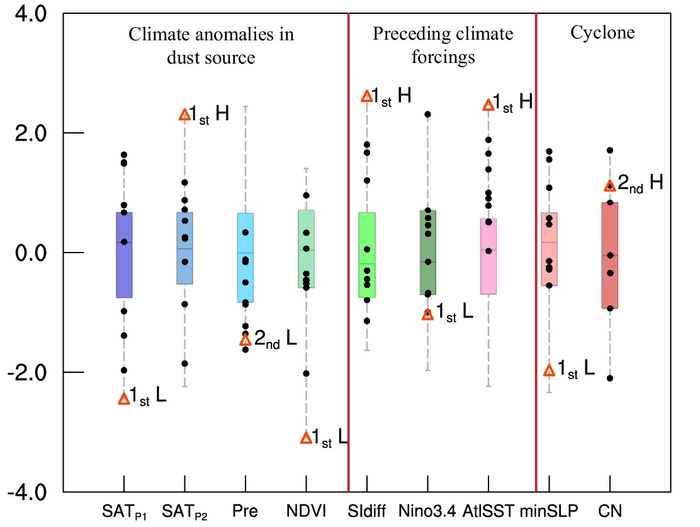After an absence of over a decade in North China, tough sandstorms returned in the spring of 2021. From March 14th to 17th, the severe sandstorm weather impacted an extensive region of over 3.8 million square kilometers.

Image Credit: ©Science China Press.
In Beijing, the PM10 concentrations surpassed 7000 µg m−3, and the visibility was just a few hundred meters. This posed a severe threat to people’s health, ecological civilization and transportation.
The research group, headed by Professor Huijun Wang (Nanjing University of Information Science & Technology), has discovered that the surface air temperature (SAT) and underground soil temperatures present in the dust source area (around Mongolia) were constantly lower (the lowest from 1979) during early-winter, whereas it was continually greater (the highest from 1979) during late-winter.
Deeper permafrost was caused by the cooler temperature, and further strong warming led the land surface to thaw and become looser. At the same time, the winter precipitation was considered to be the second smallest during the last decade. Furthermore, the surface vegetation coverage achieved its worst since 1979. As soon as there is an emergence of strong winds, the dust particles will tend to rise with the wind to produce sandstorms or dust.
Professor Zhicong Yin (first author) noted that it is highly significant to determine prior climate drivers containing effective prediction information, from the observations gathered and CMIP6 simulations. Declined November-December Barents and Kara sea ice would raise the local geopotential height and the Ural blocking high, and furthermore, the anomalous northerlies carried cold air mass to Mongolia in early winter.
But the positive anomalies of January-February sea ice caused the cold air mass to be caught over the West Siberian Plain and the East European Plain and led to warmer land surface in Mongolia.
La Niña event (cooler east tropical Pacific) and positive sea surface temperature anomalies in northwest Atlantic were discovered to be the other two external forcing factors. Following the La Niña event, the East Asian winter monsoon would reinforce, and the water vapor flux easily diverged near Mongolia and thus there was a decrease in precipitation.
In the same way, the warmer Northwest Pacific caused an upper Rossby wave-like train to lessen the Asian polar vortex and reinforce the Ural High and led to a decrease in winter precipitation in Mongolia. In summary, the reverse of sea ice anomalies, the La Niña event and the warmer Northwest Atlantic collectively resulted in the loose and dry surface in Mongolia, that is, sufficient dust source.
Furthermore, the powerful Mongolian cyclone during the last decade formed and developed from March 14th to 15th, 2021. The declining motions with downward transport of westerly momentum considerably enlarged the surface winds (25 m s−1). This shook and blew the dry and loose land surface. Later, the rising motions in front of the cyclone elevated the sand particles into the troposphere.
Along with the movement and development of Mongolian cyclones, the cold advection carried huge amounts of dust particles to North China. At 09:00 on March 15th, the tropospheric westerly momentums were transported down to the surface, leading to huge gusts (15 m s−1). This was responsible for the severe sandstorm that took place in North China.
Journal Reference:
Yin, Z., et al. (2021) Why super sandstorm 2021 in North China. National Science Review. doi.org/10.1093/nsr/nwab165.